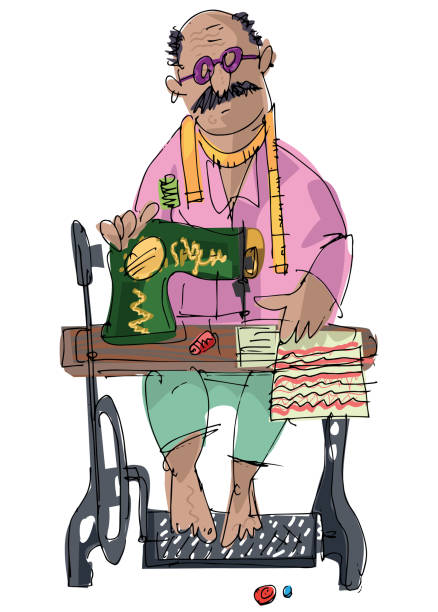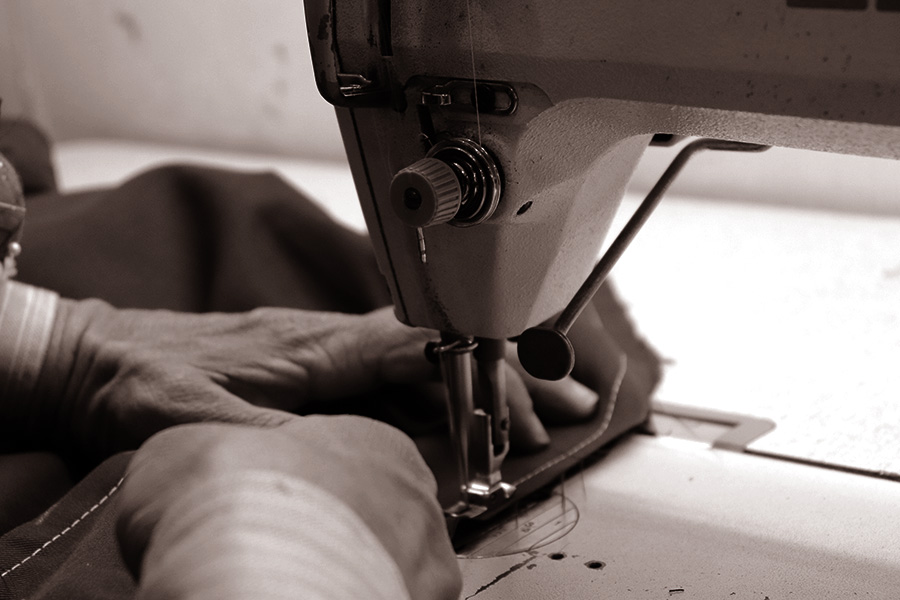Understanding the Tailoring Process: From Material Choice to Last Fitting for the Suitable Wardrobe
The customizing process is a complex interaction of art and science, starting with the crucial decision of fabric option and finishing in the specific changes of final installations. Each fabric type brings one-of-a-kind qualities that influence not just the aesthetic allure but likewise the garment's long life and suitability for numerous celebrations. Comprehending the nuances of customizing techniques can boost one's closet to unprecedented levels of elegance. As we discover these components additionally, one need to think about how even the smallest details can considerably influence the general outcome of one's personal design.
Importance of Fabric Choice
Selecting the ideal material is important in the customizing process, as it straight affects the comfort, resilience, and general visual of the last garment (tailor perth). The selection of fabric establishes the foundation for the garment's performance, efficiency, and design. Various fabrics possess unique residential properties, such as stretch, breathability, and weight, which can considerably influence just how the garment drapes and fits the body
Additionally, textile option impacts the garment's long life and convenience of treatment. Top quality fabrics can stand up to wear and tear, keeping their look and structure with time, while lower-quality products may bring about pilling or fading. Additionally, the best material adds to the garment's capacity to shift throughout occasions and seasons, consequently enhancing convenience.
A tailored item made from a suitable fabric not just showcases craftsmanship but additionally boosts the wearer's self-confidence. Subsequently, comprehending the nuances of fabric selection is vital for any customizing endeavor. It guarantees that the end product not only fulfills the visual wishes of the customer however also aligns with functional requirements, consequently attaining a harmonious equilibrium between form and feature in the customized closet.
Types of Fabrics and Their Usages
Comprehending the different types of fabrics offered is important for making notified decisions during the customizing process. Each fabric has distinct features that dictate its suitability for particular garments and events.
Its flexibility enables it to be tailored right into every little thing from t shirts to gowns. Its natural elasticity assists garments keep shape over time.
Silk exudes deluxe and is light-weight, making it perfect for eveningwear and fragile shirts; however, it needs careful handling due to its delicacy. Linen, with its textured coating, is a popular selection for warm climates, providing a crisp and airy feel, but it wrinkles quickly, which might impact the garment's look.
Artificial fabrics, such as polyester and nylon, offer sturdiness and resistance to creases, making them appropriate for day-to-day wear and active clothing. Understanding these material types and their properties permits much better decision-making, ensuring that each customized piece not only fits well however also aligns with the desired objective and event.
The Tailoring Techniques Discussed
The art of customizing counts on a range of techniques that change material right into well-fitted garments. Central to this procedure is pattern preparing, where a dressmaker creates templates based on the customer's measurements and desired design. This preliminary action guarantees that the garment will certainly fit the wearer effectively prior to any type of cutting takes place.
When patterns are developed, cutting strategies enter into play. Precision is vital as inaccuracies can lead to misfitting garments. Tailors typically utilize various cutting approaches, such as single-layer reducing for intricate designs and multiple-layer reducing for effectiveness on basic patterns.
Basting is an additional essential method, permitting tailors to briefly sew fabric items together for an initial fitting. This approach supplies the opportunity to analyze the drape and overall silhouette before last sewing.
Seaming methods, including french seams and flat-felled joints, improve the garment's durability and aesthetic allure. Tailors likewise use methods such as interfacing and extra padding to give structure and shape to specific locations, like shoulders and collars.
Last but not least, finishing techniques, consisting of hemming and side completing, make sure the garment's durability while offering a sleek appearance. Together, these methods develop the foundation of efficient tailoring, leading to splendid, custom-fit clothing.
Suitable Changes and Factors To Consider

Secret factors to consider consist of the shoulder fit, which ought to neither sag neither limit motion, and the sleeve length, which ought to enable comfy arm movement while maintaining a polished look. Additionally, adjustments at the waist can improve the silhouette, with choices to allow out or take in fabric as required.
The increase of trousers is one more essential variable; it should sit comfortably over the hips without triggering pain, enabling simplicity of motion. Hemming lengths for both pants and skirts ought to show the user's favored design while appreciating percentages.

Maintaining Your Tailored Clothing
Appropriate try these out maintenance of tailored garments is vital to protecting their fit and appearance in time. To make certain long life, normal cleansing is extremely important. Always follow the care tag guidelines, which might suggest completely dry cleaning for delicate textiles or machine cleaning for more long lasting materials. Prevent frequent laundering, as this can use down the material and alter the garment's shape.
Storage space is just as important; use cushioned wall mounts for coats and coats to maintain shoulder framework, and shop trousers folded neatly or hung to stop creasing. Safeguard garments from straight sunshine, which can fade colors and damage fibers.
Furthermore, periodic examinations for minor repairs can avoid larger problems. Check for loosened switches, fraying seams, or signs of moth damage, dealing with these issues promptly to preserve the garment's stability.
Lastly, take into consideration seasonal rotation. Wearing customized pieces in small amounts permits textiles to recuperate, expanding their lifespan. weblink By applying these upkeep methods, you can ensure that your customized garments stay as excellent as the day you initially used them, improving your excellent closet for several years ahead.
Verdict
The customizing procedure, incorporating textile choice, proficient strategies, and precise fitting changes, plays a crucial duty in developing garments that improve both comfort and style. Each stage adds to the general performance of the end product, making sure that clothing not just fits well however likewise reflects specific identity. In addition, comprehending the importance of upkeep expands the life of customized garments, strengthening their worth in a well-curated closet. A thorough technique to tailoring finishes in a confident and polished appearance.
Choosing the best fabric redirected here is important in the tailoring process, as it directly influences the comfort, sturdiness, and total aesthetic of the final garment. The option of fabric sets the structure for the garment's efficiency, functionality, and style. Various textiles have distinct buildings, such as stretch, breathability, and weight, which can considerably impact how the garment drapes and fits the body.
The art of customizing relies on a variety of strategies that change material right into well-fitted garments.The tailoring process, encompassing textile option, competent methods, and precise fitting adjustments, plays an important function in producing garments that improve both convenience and design.